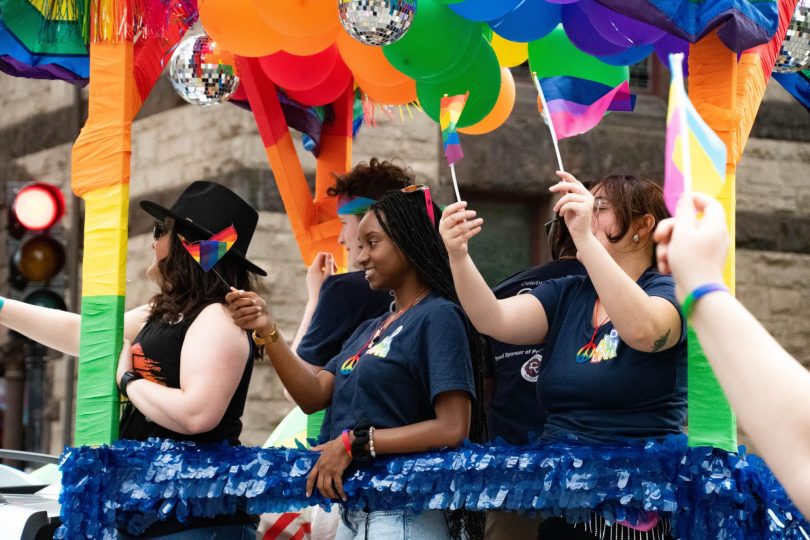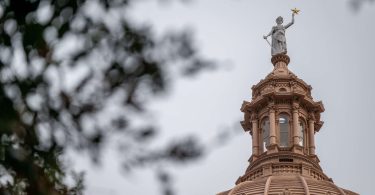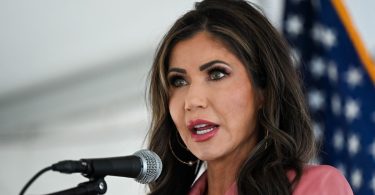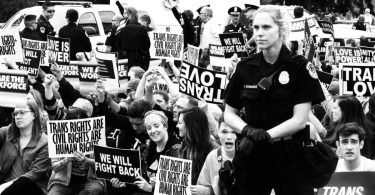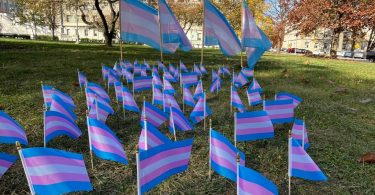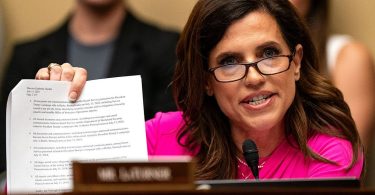The LGBTQ community, allies and Bostonians alike decorated in the colors of the rainbow lined the city’s streets June 8 for the Boston Pride for the People parade. Pride parades take place around the U.S. throughout June to celebrate the LGBTQ community and honor the 1969 Stonewall Uprising, a key event in the Gay Liberation Movement.
“I didn’t come out as gay until I was in my 70s,” said Robert Morton, a parade attendee who spent nearly 53 years married to a woman and did not come out of the closet until she passed. Morton said his late wife was the only woman he would ever love, and after her death, he slowly came out to his loved ones. At the parade, he celebrated pride alongside his husband.
Robert Morton watches the parade march past with a rainbow boa wrapped around his neck. Morton, who didn’t come out as gay until he was in his 70s, attended the parade alongside his husband. (Elizabeth Scholl)
In previous years, Morton drove a billboard truck for the Boston Gay Men’s Chorus in the Boston Pride parade. This was his first year attending strictly as a community member.
“I just wish everybody would finally be accepting of everybody,” Morton said. “Not just gays, not just bis, not just trans. Everybody.”
The parade started at 11 a.m. and marchers proceeded on the 1.7 mile route from Clarendon Street, ending by the Boston Common for more celebrations throughout the day.
Morton was among an estimated crowd of more than 1 million people, some traveling from out of state like himself, and others from the surrounding areas. For the second year, Boston Pride for the People, a volunteer-led organization that organizes events to celebrate LGBTQ community events, hosted the parade.
“I’m glad that it’s Pride for the People,” said Matthew Honeycutt, a member of Boston Ironsides Rugby Football Club. “It’s changed from the format that it was several years ago that was just very corporate.
Boston Ironsides is the only intentionally inclusive club rugby team in the New England Rugby Football Union, and the group represented its many LGBTQ team members by participating in the parade.
“Pride means the same as the mission of this team,” Honeycutt said. “It means inclusivity; it means a space for absolutely everybody to be joyful and expressive.”
For many community members, a big part of pride is advocating for LGBTQ visibility.
“Pride means our ability to be seen in a safe way because no matter what people think, in many, many, many places, it’s not safe to be gay,” Morton said.
Trevor Nardini, assistant commissioner for FLAG (Friends, Lesbians and Gays) Flag Football Boston, agreed with this sentiment, highlighting the importance of making LGBT voices heard at Pride.
“I think it’s also about visibility and making sure that we’re standing proud in terms of who we are and making sure that people see us,” Nardini said. “Especially for people who haven’t yet come out, I think it can be very inspiring and very motivating to see people who are out in the world and help them feel more comfortable in their personal journey.”
Not only were attendees dressed in colorful outfits, but many waved flags in the air and held posters expressing themselves and celebrating their identities.
“A boy without a pussy is like an angel without wings,” read a poster held by Ezra Goodman, a student at Mount Holyoke College in South Hadley, Massachusetts.
Parade attendees ranged in ages, backgrounds and identities, but they all joyfully cheered on the parade to celebrate Pride.
“For me, Pride is the one time where instead of being the deviation, you look around and everyone’s gay and in your face about it,” Goodman said.

